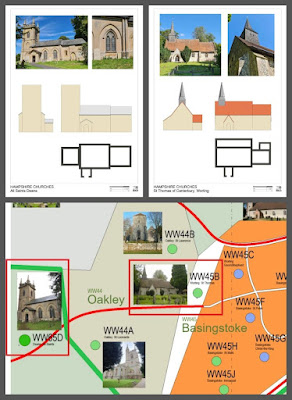As a teenager I loved these kinds of odd
spaces. Can I remember why, almost 60 years later? Not with the same clarity
and intensity. But there was a sense of quiet rebellion, of finding beauty in
unexpected places, of anti-beauty perhaps.
The Romantic period had a concept of "the sublime"... Natural beauty
that is almost frightening. Perhaps I was inspired by that idea, but seeing it
in the harsh industrial fabric of South Yorkshire around 1965. Harsh but
ageing, stained, dark, mysterious. That's part of it.
Another part was defiance. Subverting conventional pictorial composition.
Instead of a central focus, divide attention to left and right. Maybe twist and
turn, hint at a focal point out of sight around the corner.
This image is two separate photos side by side, but it triggered an instant
flashback to an earlier me, full of hope and creativity. Hungry for life's
experiences which stretched out endlessly, intriguingly into the distance.
This is me using Revit in Sketchup mode. St
Thomas Worting, just on the edge of Basingstoke. One of the churches I visited
using my free bus pass, three weeks ago. It's very cute.
Victorian Gothic. Plain tile roofs over, napped flint walls, with a wooden bell
tower. True to the local vernacular. You get off the bus and the church is just
across the road, set back behind a neat rectangular graveyard. It's a small
church with just one aisle, at the back like a lean-to kitchen on a farmhouse.
Not sure how many churches I will model
like this. Probably enough to cover all the typical elements found in the
dataset. It would be neat to categorise these and feed the data into the pins
on the map. Then we could do some analysis. Stone towers versus wood, octagon v
pyramid, clay tile v slate or lead.
Would that lead to any meaningful insights? For me at least it will be a way to
get to grips with a large and complex dataset. I'm calling it a dataset but
it's living history. A thousand years and more of human development and
conflict in the heart of old England, a big chunk of Wessex, coveted by Saxons,
Normans, Elisabeth nobility, the rich and famous of the modern world.
Two sheets with assembly views and photos
(from my bus trips) I did a prototype sheet before my last visit to UK, these
two are extending that work and moving forward.
It's all a bit crude just now, but better to add new churches at this stage
than to obsess over modelling, embedded data or sheet layouts. Let's get the
first 8 or 10 churches up to this level. Then we can do a review of methods and
LOD.
They are both Gothic, but one is Georgian and the other Victorian, a subtle
difference perhaps but very interesting, to me at least.
The Georgian church (All Saints, Deane) is embedded in a country estate, an
idealised form, of the romantic age, unrelated to local traditions. The
Victorian (Worting St Thomas) pays homage to those local traditions while also
being "of its time"
More to come.
You can choose several elements of course, but in this case I only want one. Tbe assembly now appears in the browser. Select it and make assembly views. These can then be dragged onto a sheet. Typically I am using two Elevations and a plan, but 3d views are also possible.
The part I had forgotten is how to get the cut-plane down to a level where it looks like a diagrammatic floor plan. Take any elevation view, disable the view template, go to Visibility Graphics/Annotations and turn on Sections. The plan is treated as a horizontal section indicated by a chain line. Select & nudge down to the desired level.
Simple stuff, but very handy for the work I am doing, comparative studies of a large set of old churches. I want to have one simple summary sheet per sheet that catches the basic form. Then it will be easy to flick through these and do some high-level analysis.





No comments:
Post a Comment
I've been getting a lot of spam so had to tighten up comments permissions. Sorry for any inconvenience. I do like to hear from real people